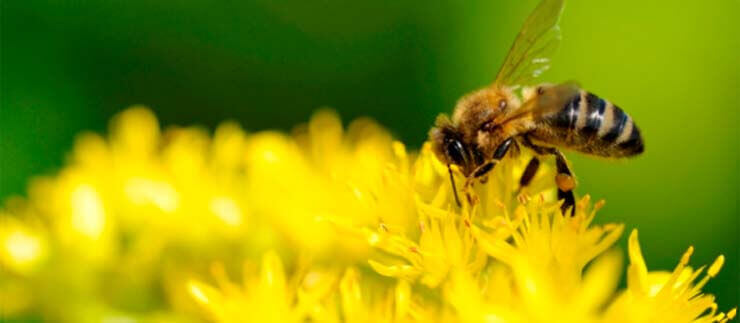Seeds
A seed can be defined as the reproductive unit of a plant which is used to grow a new plant. The seed consists of the embryo and plenty of food for the development and growth of the embryo. When the seeds get favourable conditions such as water, air, light and warmth then a new plant grows out of the seeds.
Formation of seeds
The formation of seeds takes place in two steps:
1. Pollination
2. Fertilization
Pollination
Pollination can be defined as the transfer of pollen grains from the anthers of stamens to the stigma of carpel. Since the flowers cannot move, they depend on insects like honey bees and butterflies, birds, wind and water for the transfer of pollens.

Types of pollination
Pollination is of two types:
1. Self pollination
2. Cross pollination
1. Self pollination
The transfer of the pollen grains from the anthers of a flower to the stigma of the same flower is called self pollination.
2. Cross pollination
The transfer of the pollen grains from the anther of a flower of one plant to the stigma of a flower of another plant is called cross pollination.
Agencies helpful in pollination
Pollination takes place with the help of insects, birds, wind and water. We shall now discuss in detail that how these agencies help in pollination.
1) Pollination by insects
The insects such as honey bees or butterflies usually visit the flowers in search of nectar and edible pollen grains. As they do so, the pollen grains get attached to their legs and are transferred from anther of one flower to the stigma of other flowers.
2) Pollination by birds
Some flowers are pollinated by birds such as sunbird and humming bird. These birds are small in size with long beaks. These birds hover over the flowers for sucking nectar. They suck the nectar by inserting their long beaks in these flowers. While doing so, some pollen grains get attached to their beaks. When these birds go to other flowers in search of more nectar then the pollens attached to their beaks get transferred to the stigmas of these flowers. In this way pollination gets completed.
3) Pollination by wind
This is the most common method of pollination. The pollen grains are picked up by the air currents from the ruptured anthers and dropped on the receptive stigmas.
4) Pollination by water
Pollination is done by water in those plants which are found either inside the water or on the surface of water.
Test Your Understanding and Answer These Questions:
